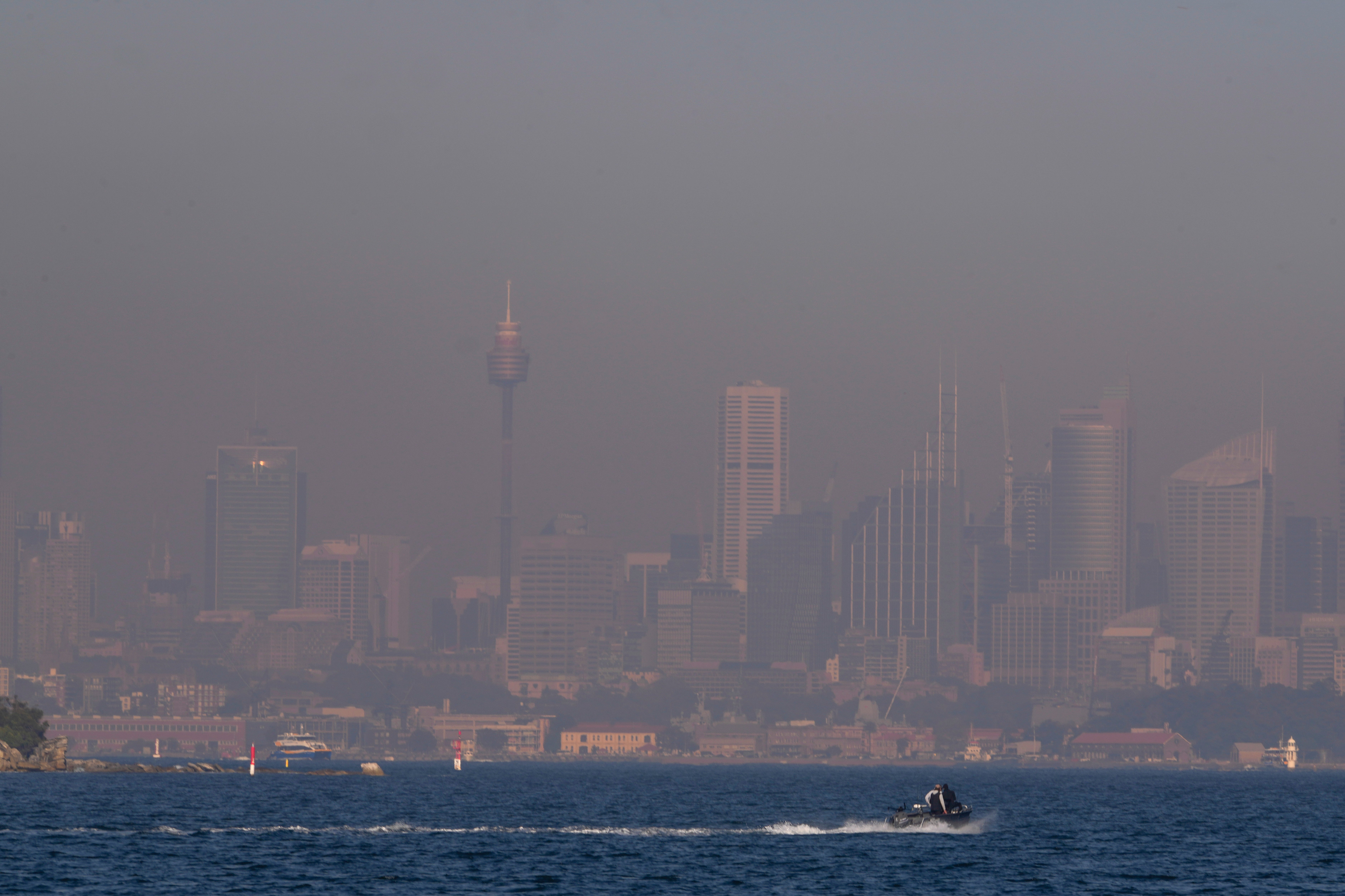Australia heatwave: Catastrophic wildfire danger declared as schools shut in record-breaking temperatures
‘We are in this run of very, very warm weather which hasn’t been seen in many, many years’

Your support helps us to tell the story
From reproductive rights to climate change to Big Tech, The Independent is on the ground when the story is developing. Whether it's investigating the financials of Elon Musk's pro-Trump PAC or producing our latest documentary, 'The A Word', which shines a light on the American women fighting for reproductive rights, we know how important it is to parse out the facts from the messaging.
At such a critical moment in US history, we need reporters on the ground. Your donation allows us to keep sending journalists to speak to both sides of the story.
The Independent is trusted by Americans across the entire political spectrum. And unlike many other quality news outlets, we choose not to lock Americans out of our reporting and analysis with paywalls. We believe quality journalism should be available to everyone, paid for by those who can afford it.
Your support makes all the difference.A complete fire ban was imposed in Sydney for the first time in three years and schools were shut in parts of New South Wales amid an intense early spring heatwave.
Several records have been shattered as southwestern parts of Australia grapples with intense heat.
The fire ban was declared for the Greater Sydney area and coastal communities to the south as parts of the region suffered their highest September temperatures in decades on Monday. It is the first such declaration for Sydney since late November 2020.
The city matched its September maximum temperature record of 34.6C – more than 12C higher than the September average – on Tuesday.
It was also the fifth day of temperatures beyond above 30C for the first time in September – when the country’s spring season had just begun – in its recorded history.
Several cities in southern Australia, Victoria and New South Wales had temperatures climb to the mid to high 30s on Monday. Ceduna in South Australia recorded a temperature of 39.8C.
Authorities have forecast the most destructive wildfire season during the approaching Southern Hemisphere summer in Australia’s populous southeast since the catastrophic Black Summer fires of 2019-20 that killed 33 people, destroyed more than 3,000 homes and razed 19 million hectares (47 million acres) of forest area.
The Australian Bureau of Meteorology described it as an unusually warm start to spring for much Australia’s southeast.
“We are in this run of very, very warm weather which hasn’t been seen in many, many years,” the bureau’s senior meteorologist Miriam Bradbury said.
Tuesday has been another scorcher along the NSW coastline. Sydney matched its September record temp with 34.6C. Many other places also set records for heat in September. More: https://t.co/jlOoTZLz8d pic.twitter.com/pf2ZKDcC8m
— Bureau of Meteorology, Australia (@BOM_au) September 19, 2023
Authorities said 61 wildfires were burning across Australia’s most populous state on Tuesday, with 13 burning out of control.
Authorities declared a “catastrophic” fire danger along the south coast of New South Wales, the highest level of danger in a five-tier rating system.
“The problem is when we get into fires in ‘catastrophic’ fire danger rating, there’s not much time for us to get on top of those fires and contain them and once they take hold we won’t be able to put those fires out,” Rural Fire Service Commissioner Rob Rogers said.
“We need to warn the community the risk has elevated and make sure that people focus on life preservation on a day like today,” he said.
State education authorities said 20 schools in south coast communities closed on Tuesday because of the fire danger they were exposed to.
Historic heat in Australia
— Extreme Temperatures Around The World (@extremetemps) September 18, 2023
Stunning 38.4C at Port Augusta in South Australia,new monthly record
And New South Wales with nearly 37C
RECORDS
36.6 Moruya
35.9 Bega
35.4 Ulladulla
34.8 Forbes
34.7 Albion Park
34.6 Wyalong
34.5 Narooma
33.4 Mangrove
33.4 Montague Isl.
28.8 Braidwood https://t.co/FwvXn8ckzy
The unusually hot spring in Australia follows a period of record-shattering temperatures worldwide.
This summer in the Northern Hemisphere has been the hottest in about 120,000 years, according to the World Meteorological Organisation, prompting deadly heatwaves and extreme weather across Asia, Europe and North America.
The Southern Hemisphere winter temperature was also the warmest on record, with South America experiencing winter heatwaves.
Australia’s weather bureau has predicted the period between October and December to be drier and warmer than average for much of the country.
The higher temperatures come on the back of the El Nino, which is known to prompt extreme weather events from wildfires to cyclones and droughts in Australia.
The Bureau of Meteorology on Tuesday declared an El Nino weather pattern. The World Meteorological Organisation had already declared the onset in July.
“In all likelihood, we can expect that this summer will be hotter than average and certainly hotter than the last three years,” bureau manager Karl Braganza said.
Additional reporting by agencies


